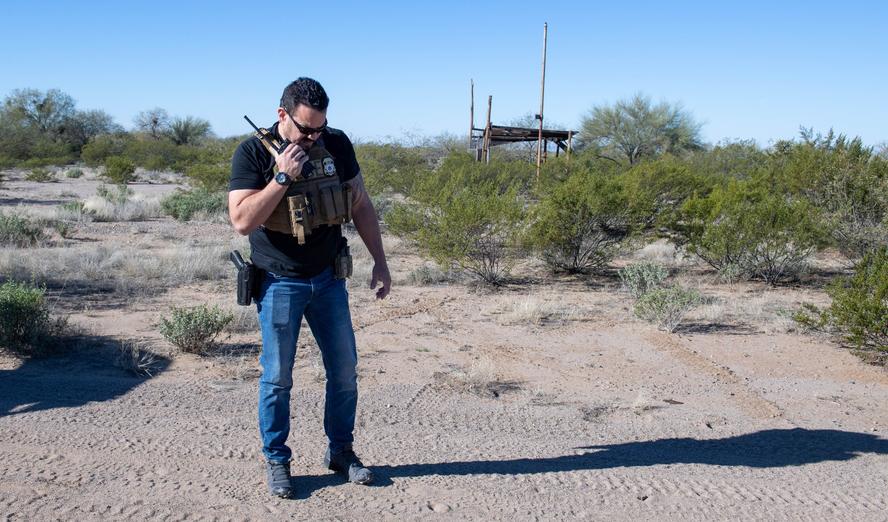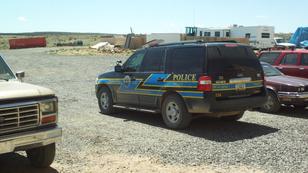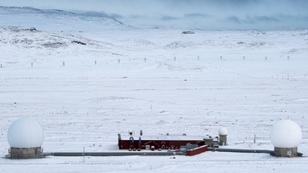Along its northern and southern borders—some areas of which are vast, often forbidding wilderness—the United States confronts threats from foreign adversaries, their proxies, and transnational criminal organizations. These groups increasingly employ sophisticated surveillance technology to enable human and drug trafficking and other activities. The United States needs to fight back with more advanced technological tools combined with knowledge of the terrain from tribal populations or other communities around the borderlands.
Collaborative law enforcement relationships with Indigenous communities aren't new. A prime example is the partnership with the Shadow Wolves, a specialized unit of Tohono O'odham Nation members, who have served in the Sonoran Desert of southern Arizona for five decades. They are the only Native American tactical unit assigned to the U.S. Department of Homeland Security and rely on centuries-old tracking skills.
The United States needs to fight back with more advanced technological tools combined with knowledge of the terrain from tribal populations or other communities around the borderlands.
The Shadow Wolves specialize in detecting and countering TCOs (transnational criminal organizations), particularly their narcotics and human trafficking operations, through intelligence gathering and direct interdiction. The Shadow Wolves have achieved significant results, including large seizures of narcotics, disrupting trafficking routes into the United States, and mitigating escalating violence.
The United States could have more units like the Shadow Wolves, and they could be even more effective if equipped with advanced technology such as UAVs (unmanned aerial vehicles, or drones) for observation and reporting. Such tools could serve multiple missions: search and rescue, monitoring of natural hazards, observation and tracking of subsistence resources, and local law enforcement. This dual-use approach could create benefits for tribal and local communities while also equipping them to be part of the effort to detect and mitigate threats to the United States from beyond our borders.
Working with local forces, especially to counter drug-trafficking cartels, is not unique to the United States. Various defense groups emerged in Colombia in the 1990s to combat the cartels. That is also happening today in Mexico.
In the Arctic, Indigenous personnel have been playing a significant security role dating back to World War II, when communities in Alaska were mobilized for defense and intelligence gathering. The Arctic has reemerged as a salient domain for new strategic competition and foreign interference. Indigenous personnel today continue to act as the eyes and ears of the U.S. government in the region, serving an important role in economic and maritime national security and defense. These personnel continue to serve reconnaissance missions, help train military forces, and work to support law enforcement to combat illegal activity or foreign interference.
Other countries also have had success using this model against TCOs and foreign interference, where local and Indigenous forces play a significant role in responding to security threats, particularly when local knowledge and intelligence are critical and difficult to obtain. In Europe, for instance, community-led organizations were formed to deter Russian hostilities in the Baltics, while in Afghanistan, similar forces were established to counter the Taliban.
Congress has recognized the value of Indigenous defense forces and has invested in expanding and integrating their unique capabilities into broader national security frameworks. By providing these specialized units with enhanced resources, targeted training, and recruitment support, the federal government could strengthen not only the operational effectiveness of groups like the Shadow Wolves but also reinforce tribal sovereignty.
This collaborative security model could also be extended effectively to other rural populations along America's borders. Southern border ranchers regularly face TCO incursions. Remote Alaskan communities managing oil and gas infrastructure also confront risks of foreign interference. Partnerships with these local populations, which leverage their local knowledge with newer technology, can significantly strengthen security across these frontier regions.
Partnerships with local populations, which leverage their local knowledge with newer technology, can significantly strengthen security across these frontier regions.
This approach, while promising, presents some challenges. The risk of foreign powers or TCOs co-opting these areas presents a substantial security vulnerability. That means rigorous vetting of potential recruits becomes essential for U.S. national security, particularly when concerns about dual allegiance arise. Furthermore, any technology or equipment provided through government investment could be compromised and fall into enemy hands, undermining the initiative.
Still, as threats from TCOs and foreign interference increase along U.S. borders, expanding federal partnerships with local and Indigenous actors represents a vital step toward bolstering national security. The combination of traditional knowledge with modern technology creates a powerful security framework. While such partnerships aren't simple to create and manage, the United States and other nations have successfully leveraged such collaborations to address salient security threats. By continuing to invest in these relationships, the United States not only strengthens border security but also fosters greater cooperation with communities that have historically guarded America's frontiers.



